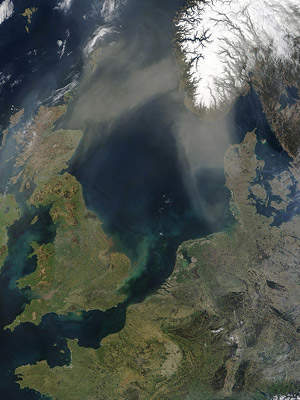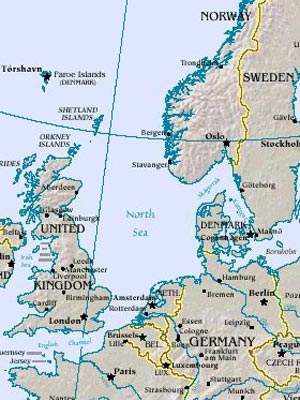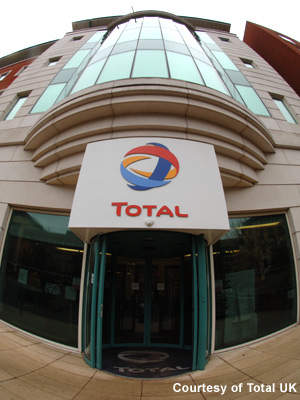The Frigg field is located 230km north-west of Stavanger between the continental shelves of the UK and Norwegian borders in North Sea. The field was discovered in 1971 in Norwegian Block 25/1 and UK Block 10/1, at a water depth of 100m. It was shut down in 2004 after 27 years of production.
Following the discovery, the UK and Norwegian Governments signed an agreement called the Frigg treaty to regulate exploration and production of gas from the Frigg reservoir. The treaty declared that 60.82% of the reserves are located on the Norwegian side and nearly 40% on the UK side.
The field has licence holders on either side of the border. The licencee partners in the Norwegian waters are Total E&P Norge – operator (holding 47.13%), Norsk Hydro (32.87%) and Statoil (20%). The UK licencee is Total E&P UK – operator (100%).
In August 2009, Total E&P Norge awarded a contract to Electromagnetic Geoservices (EMGS) to provide 3D EM data acquisition and processing services for the Frigg field. This will help the operator to form a better understanding of the field.
The data will be acquired over a 100km² area at a depth of 100m using densely sampled, wide-azimuth 3D EM grids. A survey is being conducted using BOA Thalassa, a purpose-built 3D EM vessel.
Decommissioning
A total of six installations including the damaged DP1 platform had to be removed from the field. Both the governments agreed to clean up and remove the structures on the field except for the gravity base structures of concrete drilling platform 1 (CDP1), treatment platform 1 (TP1) and treatment compressing platform 2 (TCP2).
The removal and clean-up work began after the wells were plugged and abandoned.
Aker Kvaerner Offshore Partner (now Aker Solutions), a global engineering and construction services provider, was given the contract for engineering, preparation, removal and disposal of the Frigg installations.
Aker Solutions leads the consortium of Norwegian and UK companies including Aker Kvaerner Offshore Partner, Aberdeen, Aker Stord, Saipem UK and Shetland Decommissioning.
During 2004-05, the pipelines entering or leaving the manifold compression plant 01 (MCP-01) were bypassed, allowing it to be used after decommissioning.
About 85,000t of steel was removed from the Frigg field and the MCP-01 between 2005 and 2008. Of this 20,000t was taken to Shetland for dismantling and the remaining to Stord. All the steel was recycled.
Saipem 7000, the world’s largest crane vessel, was deployed to lift and remove the topside modules of 65,000t, to be broken up and recycled. The decommissioning works are due to be completed in 2012.
Geology and reserves
About 50 million years ago large quantities of sand were deposited in the centre of the UK North Sea due to the movement of the Earth’s crust. These large quantities of sand were carried away by the big river systems, forming the Shetland platform. After touching the coast, large deltas were formed by rivers splitting to create underwater fans of sand.
These fans of sand, compressed into sandstone, deposited shale. Oil and gas travelled between the fractures of these sediment rocks, forming gas chimneys that are easy to detect on seismic maps of the area.
This Eocene Frigg Sandstone Formation is the main reservoir of the field and is located at a depth of 2,000m.
The total recoverable reserves of the field were 192 billion Sm³ gas at a recovery rate of 78% over its lifetime.
field Development
The infrastructure on the Frigg field was developed in three phases: Phase I (1977), Phase II (1978) and Phase III (1981).
The CDP1, TP1, the flare platform (FP), the quarters platform (QP), the MCP-01 and the receiving terminal at St Fergus were developed in Phase I, on the UK side of the field. A 32in pipeline of 360km length was laid from TP1 to Scotland.
Phase II involved development activities on the Norwegian side. Under this phase the drilling platform 2 (DP2), the TCP2, and a 32in pipeline running 360km long from TCP2 to Scotland were constructed. This phase also saw the expansion of TCP2 with compressors to maintain gas pressure from the field.
Phase III saw the installation of extra compressors on TCP2 to meet the required deliveries of British Gas Corporation at a constant pressure.
Platforms
DP1 was to be the first platform in the field. The contract to design the platform was given to McDermott and its construction was completed in 1974 at Cherbourg in France. However, the installation of the platform proved to be troublesome, with the jacket sinking to 107m in the sea. After repeated attempts to salvage the platform, it was abandoned in the seabed.
During its production life the Frigg field had five platforms: the QP, TP1, TCP2, CDP1 and DP2.
The QP is a four-legged steel platform holding living quarters, a control room, a helideck and communications. The three-storey quarters were large enough to accommodate up to 120 people. The QP platform was installed in 1975 by Oceanic Contractors and was ready for occupation in 1977. The bridge connecting the TP1 to the QP was also extended during this period. QP is at a water depth of 104m.
TP1 was the first concrete gravity base structure (GBS) to be built in the UK North Sea. It is located at a water depth of 104m. The platform’s construction contract was given to Ardyne Point in 1975 and it was operational in 1976. The platform was connected by bridges to the QP and the TCP2. It processes gas from CDP1 before transporting it through the British pipeline to the St Fergus terminal in Scotland.
TCP2 is another gravity base structure (GBS) platform built in the Norwegian North Sea. The contract was assigned to Condeep Group, comprising Aker and a Norwegian contractors’ joint venture comprising Furuholmen, Hoyer Ellesfen and Selmer Construction. The construction began in 1976 and the platform was commissioned in 1978. The key activity of this platform was to process gas from the DP2 drilling platform before transporting it through the Frigg Norwegian Pipeline to Scotland.
The CDP1 is a concrete gravity platform built on the UK side of the border for the drilling and production of gas. It was built as an extension to the manifold platform (MP1) for pipelines to the St Fergus Terminal. This platform is at a water depth of 98m.
The DP2 is the drilling and production platform on the Norwegian side. It is an eight-legged steel platform placed at a water depth of 98m. It has quarters to accommodate 80 people.
The platform was installed in 1976-77 and the production of gas began in 1978.
The FP was designed by Elf and the Compagnie Française d’Enterprises Metalliques (CFEM) yard in 1975. It was tied to the TP1 to burn off gas during start-up operations and act as a safety valve at excessive pressures in the Frigg production system. It was shut down in the 1990s when production ceased on TP1, and was later removed.
Subsea system
The Frigg field consists of two main 32in pipelines and many other pipelines connecting the installations on the field and the subsea fields Lille-Frigg, North East Frigg and East Frigg.
Lille-Frigg was discovered in 1975 in Block 25/2 by Petronord while drilling to determine the extent of the Frigg field between Norway and the UK. It is located at a water depth of 155m. The production started in 1994 and the field was closed in 1999. During its life it produced 2.2 billion Sm³ of gas and 8.2 million barrels of condensate.
In 1974, North East Frigg was discovered by Elf while drilling at a depth of 1,920m under the seabed. It was located in Block 25/1, 18km north-east of Frigg. This is a usually unmanned control room subsea system at a water depth of 102m. It also has living quarters for 12 people. The subsea template of this field was installed in 1981 and the production of gas began in 1983. It produced 11.6 billion m³ of gas during its life. After a decade of production, operations at the field were stopped in 1993.
East Frigg was discovered in 1973 at a water depth of 110m, 18km away from the main field. Production on the field began in 1988 and it was shut down in 1997. During its life it produced 9.2 billion m³ of gas and 625,000 barrels of condensate.
Wells
The drilling of wells for the Frigg field was carried out during 1976-79. A total of 48 wells (24 each) were drilled from CDP1 and DP2 platforms. The production of CDP1 began in 1977 and DP2 in 1978.
Production
Beginning in September 1977, the field reached plateau production of 16.5 million m³/year and 20,000 m³ condensate/year in the period 1978-87.
Pipelines
The Frigg field has two main pipelines (the Frigg Transportation System) to transport gas to St Fergus Terminal in Scotland. Two 32in pipelines were laid down on either side of the UK North Sea and Norwegian North Sea. The 361km pipeline 1 is on the UK side, while the 360km long pipeline 2 is on the Norwegian side. These pipelines are parallel to each other at a distance of 70m and lie at a depth of 100m and 150m in the water.
The working life of the transportation system was estimated to be 20 years but this has been extended to 30 years.
Export
The manifold compression platform (MCP-01) is in Block 14/9 of the North Sea. Installed in June 1976, it was part of the Frigg Transportation System to switch gas between the two pipelines, compress the gas, and inspect and clean the pipelines.
Gas enters through entry pipes at the base, rises up to the central core, passing through the compression systems, and pumps down to the central core, exiting from the two exit pipelines at the St Fergus Terminal. MCP-01 was designed to manage 80 million m³ of gas a day but is no longer used for compression.





